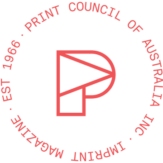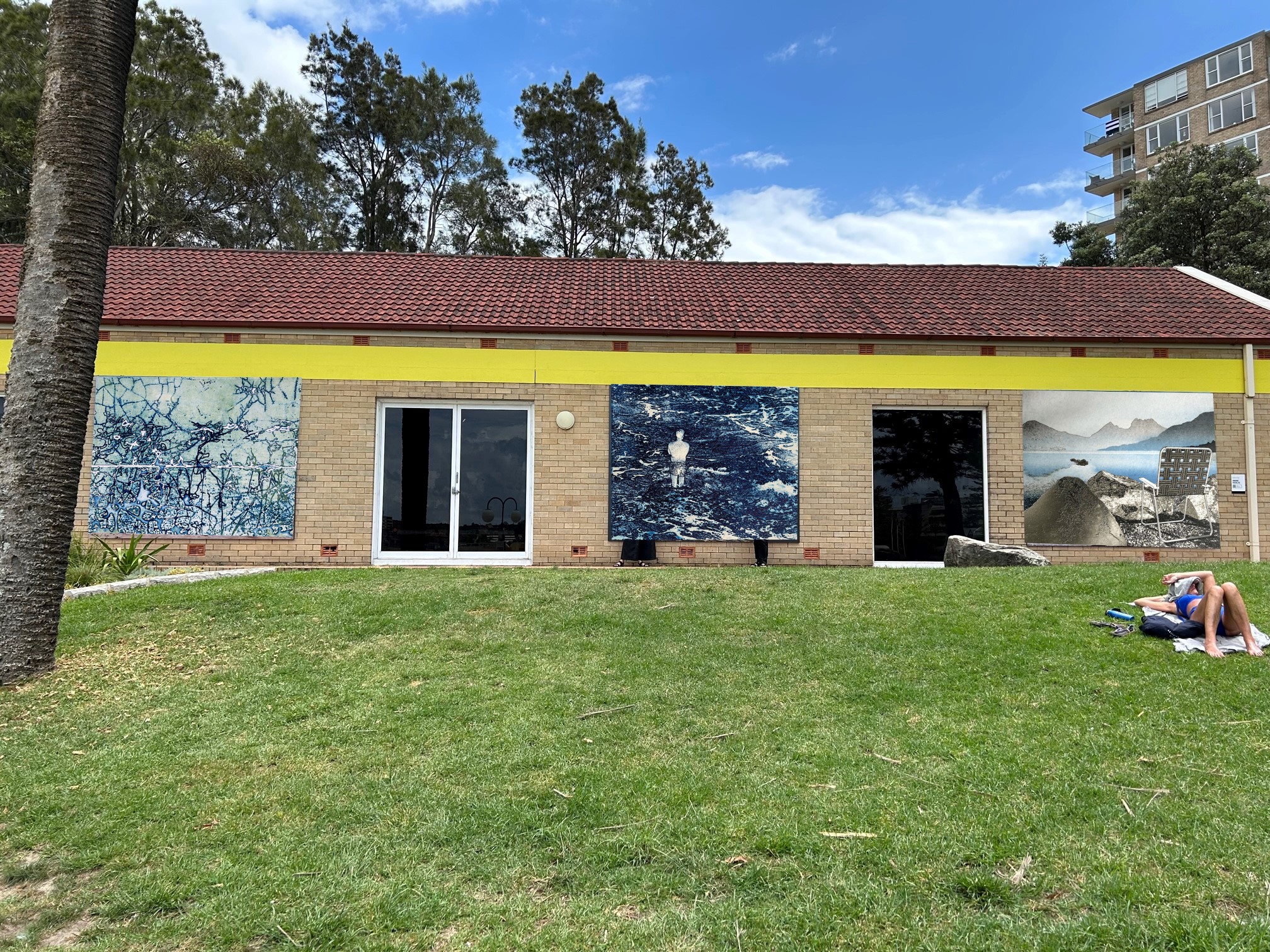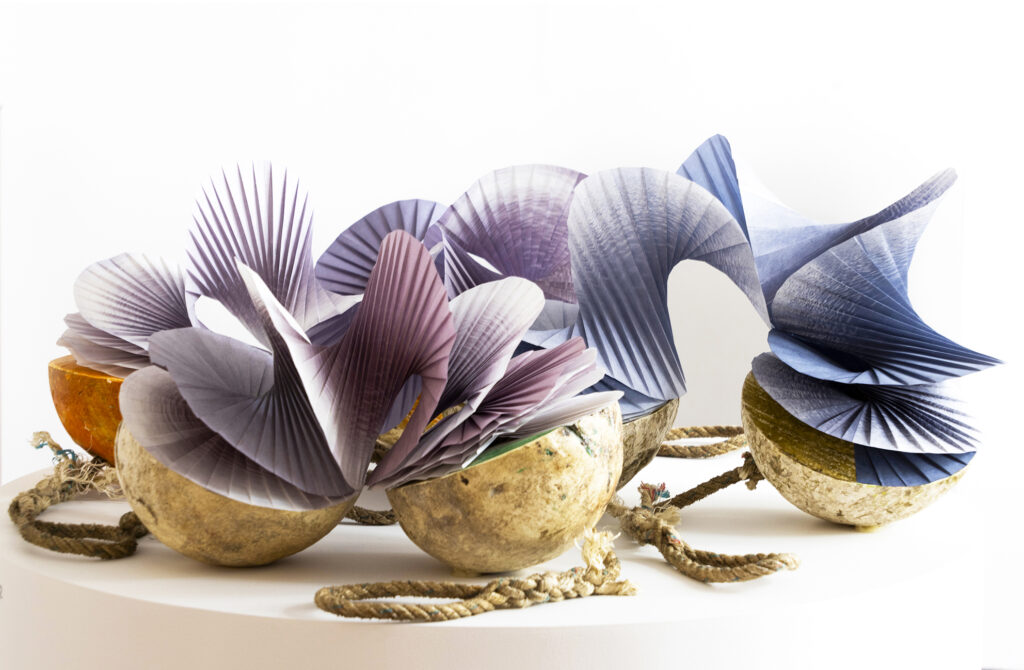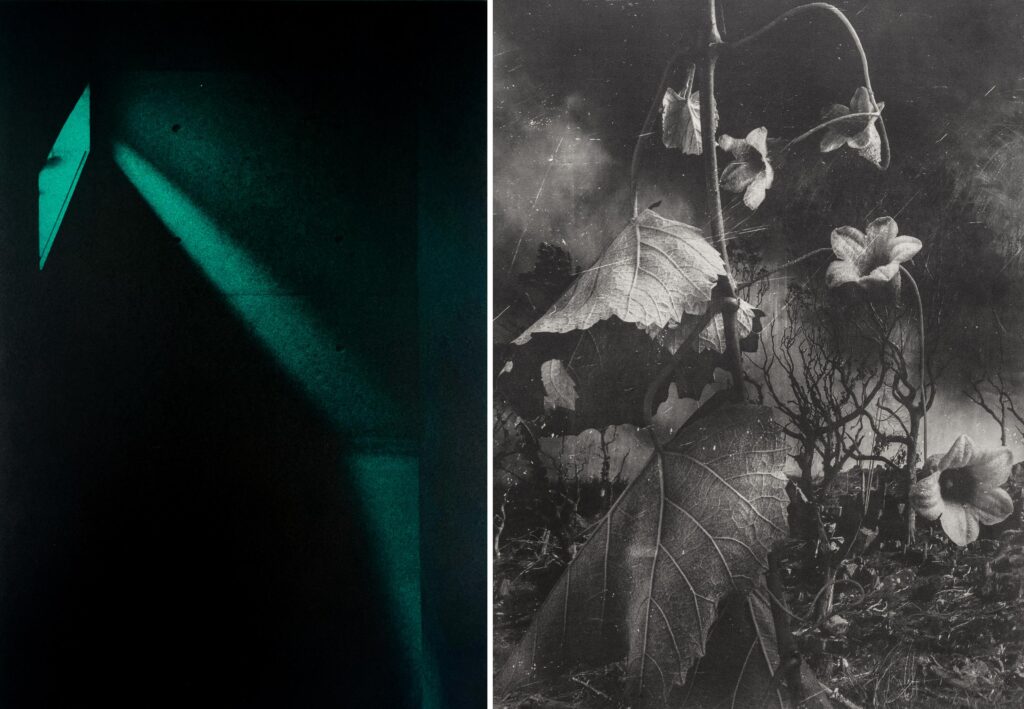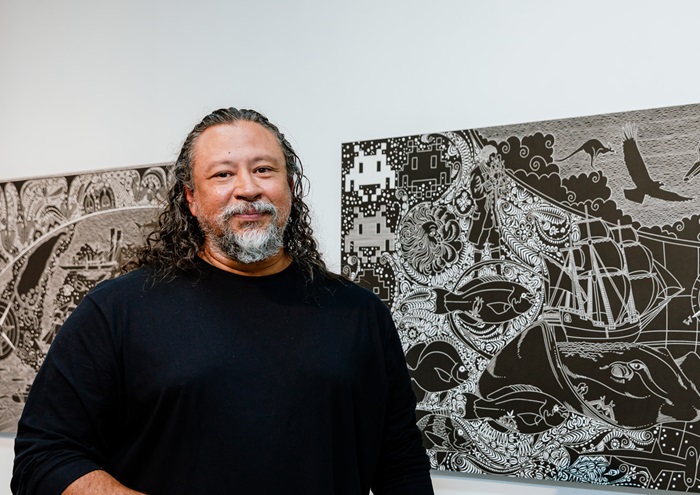Above:
The MAG&M Art Wall.
Below:
Kate Lovejoy Furnell (Hydrographic)
Libby Bassett (The Swimmer)
Tim Denmead (Lawn Chair Life)
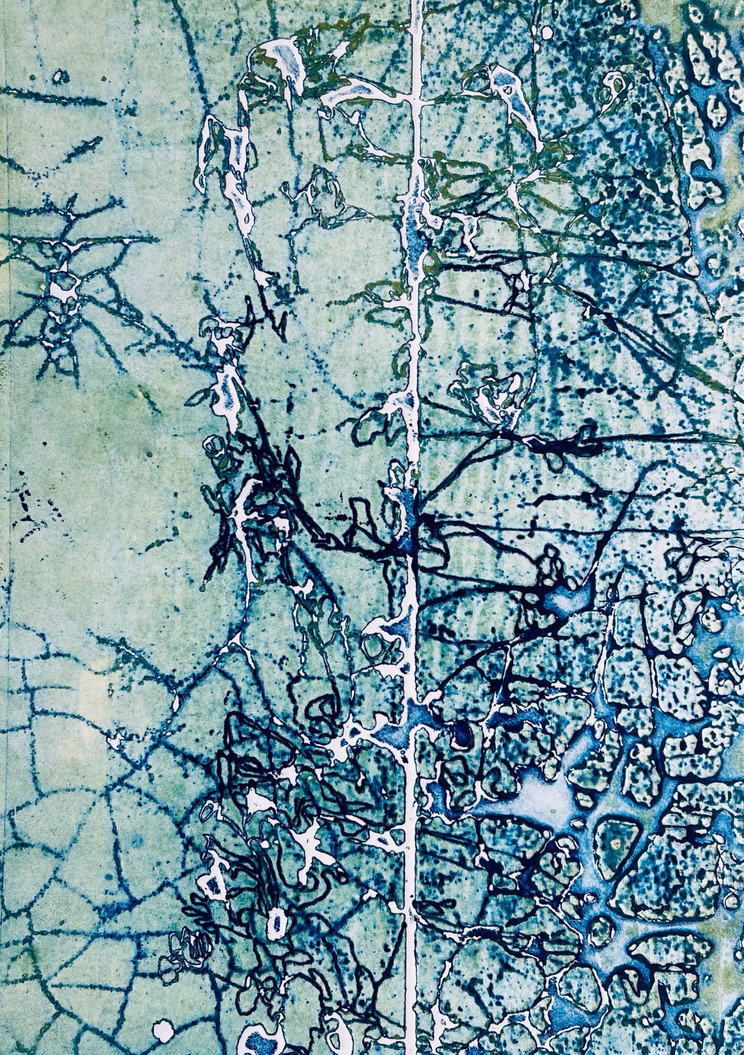
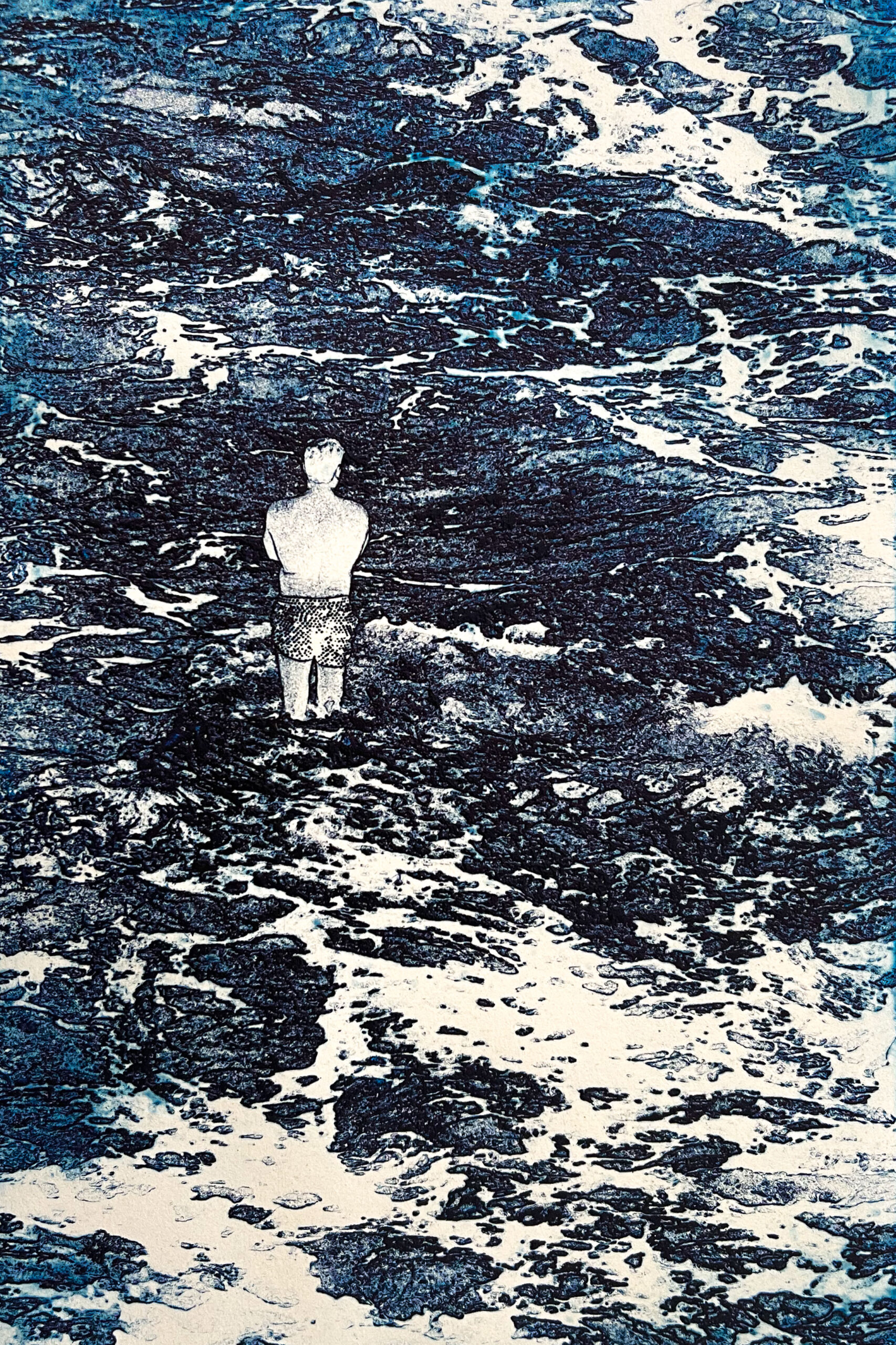
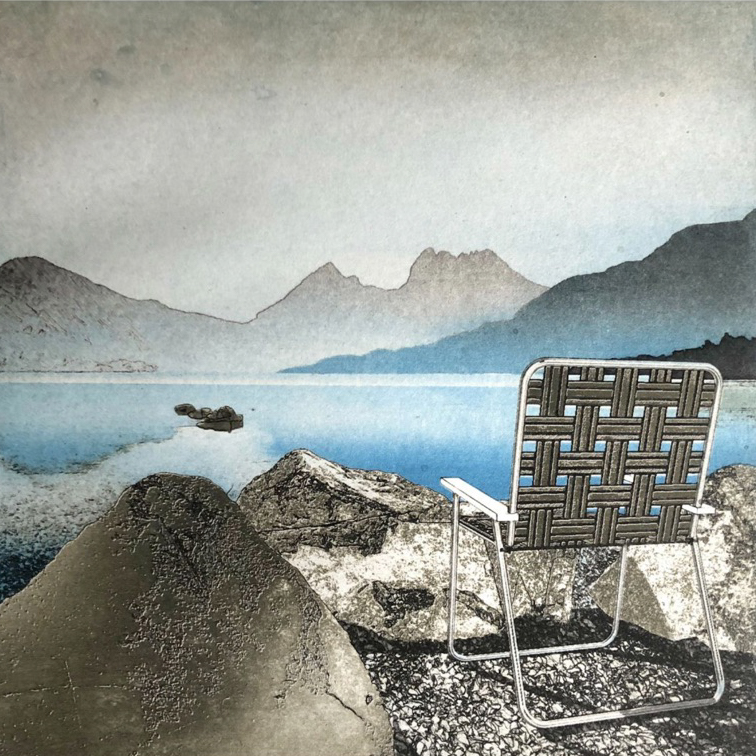
To celebrate 25 years of Warringah Printmakers’ Studio, MAG&M’s external Art Wall features works by three of its members; Kate Lovejoy Furnell (Hydrographic), Libby Bassett (The Swimmer) and Tim Denmead (Lawn Chair Life).
The Studio has been integral to the cultural life of the Northern Beaches since its incorporation twenty-five years ago, although its origins date back forty years to a group of energetic local printmakers wishing to promote printmaking as an art form. The Studio has participated in the Creative Open program and holds its annual members’ show at Curl Curl Creative Space.
MAG&M presented its work, Natural Collection (2018), which featured the work of twenty-nine Studio artists, prints from the pages of its collaborative artists’ book, Natural Collection. The project was initiated by the Studio as a response to their concerns about the loss of bushland in the local area and its impact on the habitats of our local species.
Warringah Printmakers’ Studio is a community-based, not-for-profit organisation entirely run by volunteers. Safer printmaking practice is promoted, and members have access to a variety of innovative classes, workshops, studio facilities and exhibitions.
Artist statements:
Kate Lovejoy-Furnell, Hydrographic
‘Hydrographic’ drew inspiration from the dominance of water in the geography of Sydney. The way it surrounds and informs its many bays and harbour became a series of photopolymer plates which were layered and overprinted to create an abstraction of the Sydney coastal landscape.
My printmaking is structured around different approaches to drawing and making marks. Multiple surfaces, different media and the layering of plates, paper, and ink to build an image are part of the process.
The impetus to use line work is always the beginning of any process for my work. The way a continuous or enclosed line drawing can delineate space, and create volume and texture becomes the basis of etching and drypoint work. Printmaking in all its forms – etching, collagraph, dry point, photopolymer, linocut, and handmade paper used as chine colle – allows experimentation with combinations of various techniques. By building layers and overprinting with multiple plates I create unique state prints or variable editions using the same plates in different configurations.
Observing the landscape has been an essential part of my practice where the landscape forms are abstracted into works that explore line, texture, and colour. Landscape also lends itself to the exploration of architectural forms and textural associations. I also work with ceramic, collage and painting, and find that these related fields lend ideas to each other.
Kate has been a member of Warringah Print Studio for twelve years.
—
Libby Bassett, The Swimmer
This is the first of two artworks based on a swimmer preparing to plunge into the ocean. I wanted to convey a sense of stillness in the stance of the lone swimmer, in contrast with the movement of the surrounding surf. He is calm, absorbed in his own thoughts, and unafraid of being in the sea.
I have lived on the coast for most of my life and find myself drawn to the sea and places where I swim as my main source of inspiration. I try to convey a sense of intimacy and serenity in my work and rarely include a human figure or signs of human habitation. I use a limited palette and mainly work in blues.
I mainly work with the photopolymer technique which uses no harsh chemicals. My work usually begins with a photograph I have taken, which is digitally edited to remove any elements that distract from the calm psychological mood I want to convey. The newly created image is printed in black ink onto a transparency on which I hand draw elements such as line work, shading and contrast. This reworked transparency is then placed on a metal plate coated with a light-sensitive emulsion and exposed under an ultraviolet light source. The emulsion hardens under the clear areas of transparency and remains soft under the areas covered by black ink. The soft areas wash out with water, creating a type of water ‘etch’ in the polymer surface which is then further hardened in sunlight. The plate is then inked, covered with printmaking paper, and passed through an etching press under high pressure.
The resulting artwork is known as a photopolymer intaglio print.
Libby has been a member of Warringah Print Studio for eight years.
—
Tim Denmead, Lawn Chair Life
In this work, I decided to explore the contrast of the everyday manufactured object with the majestic beauty of nature. The chair, a retro relic from my childhood, is facing Dove Lake at Cradle Mountain in quiet contemplation.
My process involves maximum control and planning. I admit to being a control freak when it
comes to printmaking, and I use many processes to get the results I am aiming for. Initially my work comes together on the screen.
For the background landscape, I used Photoshop to build the image from a picture I had taken of Cradle Mountain. I created outlines and layers of the landscape elements and then re- coloured them, using the brush and fill tools.
For the lawn chair, I built a 3D model in Paint3D and manipulated the viewing angle, so it matched the perspective of my landscape. I generated the image of the lawn chair, and then merged it into Photoshop to complete the composition. The work was made using 3 distinct colours: pale blue, yellow ochre and black. I outputted a separate artwork for each colour onto transparency film.
The film was used to make 3 photopolymer plates, all identical in size. The first plate I printed was the yellow ochre, followed by the pale blue and then the black. Each plate had to be perfectly registered with the previous one so that all the colours lined up at the end.
The beauty of the printmaking method was that the 3 individual colours blend with each other on the paper to give a range of colours and tones in the final work.
Tim first started with Warringah Print Studio 15 years ago.
—
The art wall display is on at Manly Art Gallery and Museum until 8 October.
—
Join the PCA and become a member. You’ll get the fine-art quarterly print magazine Imprint, free promotion of your exhibitions, discounts on art materials and a range of other exclusive benefits.
